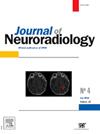机械取栓术中桡动脉与股动脉通路:对临床实践的影响——系统回顾和荟萃分析。
IF 3.3
3区 医学
Q2 CLINICAL NEUROLOGY
引用次数: 0
摘要
背景:多项研究表明,在血管内手术中,经桡动脉通路(TRA)比经股动脉通路(TFA)并发症更低。TRA与TFA在急性缺血性卒中(AIS)大血管闭塞的机械取栓(MT)中的可行性和安全性是目前争论的主题。方法:对四个数据库进行系统检索。通过优势比(OR)和95%置信区间(CI)分析二元结局,通过标准化平均差(SMD)和95% CI分析连续结局。发表偏倚采用漏斗图进行视觉评估,并通过Egger检验确认。结果:在我们的分析中,来自15项研究的5048例患者接受了MT。在这些患者中,984例经TRA行MT, 4064例经TFA行MT。TRA组的通路并发症(OR= 0.16, p值< 0.01)明显低于TFA组。在初步分析中,90天功能独立性(mRS 0-2)无显著差异(OR= 0.83, P= 0.23),但在解决异质性后,敏感性分析显示有显著差异。TRA组与TFA组在再通成功(OR = 1.07,p值=0.5)、到达再灌注时间(MD= -2.4, p值=0.43)、首通效应(OR= 0.84, p值= 0.06)、平均通数(MD=0.032, p值=0.66)、症状性脑出血(OR= 0.95, p值= 0.8)、90天死亡率(OR=1.24, p值=0.28)方面差异无统计学意义。结论:与TFA相比,TRA与更少的通路并发症相关。虽然在主要荟萃分析中没有观察到90天功能独立性的显著差异,但敏感性分析显示TFA的潜在优势。我们的研究结果强调了优化患者的选择,以最大限度地提高通过径向通道取栓的益处。需要进一步的随机试验和前瞻性研究来证实这些发现。本文章由计算机程序翻译,如有差异,请以英文原文为准。
Radial vs femoral access in mechanical thrombectomy: Implications for clinical practice – A systematic review and meta-analysis
Background
Multiple studies have demonstrated lower access complications associated with transradial access (TRA) compared to transfemoral access (TFA) for endovascular procedures. The feasibility and safety of TRA versus TFA for mechanical thrombectomy (MT) for large vessel occlusions in acute ischemic stroke (AIS) is a subject of current debate.
Methods
We performed a systematic search in four databases. Binary outcomes were analyzed through odds ratios (OR) and 95 % confidence intervals (CI), while the continuous outcomes were analyzed through the standardized mean difference (SMD) and 95 % CI. Publication bias was visually assessed with a funnel plot and confirmed by Egger’s test.
Results
There were 5048 total patients undergoing MT from 15 studies in our analyses. In these patients, 984 MT were via TRA and 4064 via TFA. Access-site complications (OR = 0.16, P-value < 0.01) was significantly lower in TRA than TFA. No significant difference was found in 90-day functional independence (mRS 0–2) in the primary analysis (OR = 0.83, P = 0.23), although sensitivity analysis indicated significant difference after resolving heterogeneity. There were no statistically significant distinctions observed between the TRA group and TFA group concerning successful recanalization (OR = 1.07, P-value = 0.5), access-to-reperfusion time (MD = -2.4, P-value = 0.43), first-pass effect (OR = 0.84, P-value = 0.06), mean number of passes (MD = 0.032, P-value = 0.66), symptomatic intracerebral hemorrhage (OR = 0.95, P-value = 0.8), and 90-day mortality (OR = 1.24, P-value = 0.28).
Conclusion
TRA was associated with fewer access-site complications compared to TFA. Although no significant difference in 90-day functional independence was observed in the primary meta-analysis, sensitivity analysis indicated potential superiority of TFA. Our findings highlighted optimizing the patient selection to maximize the benefits of thrombectomy through radial access. Further randomized trials and prospective studies are required to confirm these findings.
求助全文
通过发布文献求助,成功后即可免费获取论文全文。
去求助
来源期刊

Journal of Neuroradiology
医学-核医学
CiteScore
6.10
自引率
5.70%
发文量
142
审稿时长
6-12 weeks
期刊介绍:
The Journal of Neuroradiology is a peer-reviewed journal, publishing worldwide clinical and basic research in the field of diagnostic and Interventional neuroradiology, translational and molecular neuroimaging, and artificial intelligence in neuroradiology.
The Journal of Neuroradiology considers for publication articles, reviews, technical notes and letters to the editors (correspondence section), provided that the methodology and scientific content are of high quality, and that the results will have substantial clinical impact and/or physiological importance.
 求助内容:
求助内容: 应助结果提醒方式:
应助结果提醒方式:


